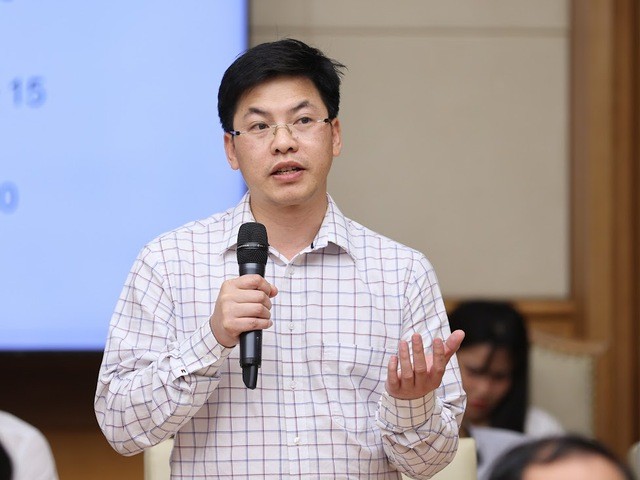“Some countries have oil, rubber, minerals, but you have the most valuable resource – human resources“, Mr. Jensen Huang – Chairman and CEO of NVIDIA Corporation – acknowledged at the Seminar “Development Trends of Semiconductor Industry, Artificial Intelligence and Opportunities for Vietnam” held in late 2023 by the National Innovation Center (NIC), under the auspices of the Ministry of Planning and Investment.
“People who are planted with seeds from STEM education, with invaluable spirits. Young startups are full of energy, have excellent education, world-class, and are all Vietnamese. They want to return to Vietnam, want to return to their homeland, because they see what we also see – Vietnam’s opportunity at this time“, added Mr. Jensen Huang.
The NVIDIA CEO also agreed with the assessment that the current time is a once-in-a-lifetime opportunity for Vietnam.
Commenting on the Project “Developing human resources for the semiconductor industry until 2030, towards 2045” of Vietnam recently, Mr. Hung Tran – CEO of GotIt! – emphasized the resource of Vietnamese experts abroad.
Mr. Hung Tran is a former Vietnam Education Foundation (VEF) scholar in Computer Science, University of Iowa (USA). He viewed that harnessing the power of Vietnamese experts abroad is “a very smart short-term strategy“.
“We have many Vietnamese people working in global companies, not just teaching or researching. If in the short-term strategy we have people who can quickly do the job within the next 24 months, then we must immediately attract this team.”
“And in the training program, theoretical training is one thing, but getting the job done is another. When we attract this network, we can even have a one-on-one program so that Vietnamese experts abroad can really help trainees in Vietnam switch to this industry to be able to do the job. That is a very important thing because if you study without practice, without a mentor, it will be very difficult, just knowing superficially“, GotIt! CEO shared at the Conference on human resources development for the semiconductor industry chaired by Prime Minister Pham Minh Chinh recently.
It is necessary to consider the final phase semiconductor engineers of the 2050 project – those who have not yet been born

CEO GotIt! Hung Tran. Photo: VGP.
In the long term, Mr. Hung Tran said that it is necessary to consider the “final generation” semiconductor engineers of the project – in 2050 – engineers who have not yet been born.
“What kind of program do we have for them now? There must be training programs for students from grade 1 to grade 2. When you want to have good people, engineers who can design, we must have really good students from a young age, not when people tell them to start training.”
“On behalf of overseas Vietnamese and myself working in Silicon Valley, I am ready to cooperate with the Government, cooperate with domestic units so that Vietnam can seize these opportunities. We cannot wait forever but have to proceed immediately. If there are specific tasks, the team of Vietnamese working abroad is very willing to cooperate in order to seize this opportunity“, said Mr. Hung.
“Human resources abroad are extremely important“, said Phung Viet Thang – Intel Country Manager in Vietnam.
“This resource can help us both ensure quality that has been verified in the global market and at the same time shorten the time for us to catch up with the capacity of the global semiconductor industry and serve domestic demand. Therefore, there needs to be a policy to attract this imported resource.”
According to the Minister of Information and Communications Nguyen Manh Hung, it is necessary to develop Vietnam’s semiconductor industry in a complete way but there must be a roadmap, nearly 30 years (in fact, 26 years) divided into 3 stages: From now to 2030; period 2030-2040 and period 2040-2050. In this 30-year roadmap, Vietnam’s semiconductor industry will not only perform a number of stages but we will be fully self-sufficient in all semiconductor stages and Vietnam is the main market.
Firstly, building Vietnam into a global human resource tower for the semiconductor industry from now to 2030. From this high-quality labor force, Vietnam will move towards the semiconductor industry. The human resource tower will be like a magnet attracting research and production to Vietnam.
“The ability to meet the human resources demand mainly involves retraining and direct training in the short term. Other countries want to train an electrical engineer to work in the semiconductor industry must be trained for about 2 years, but in Vietnam it only takes 3-6 months or 12 months“, said Minister Hung.







































